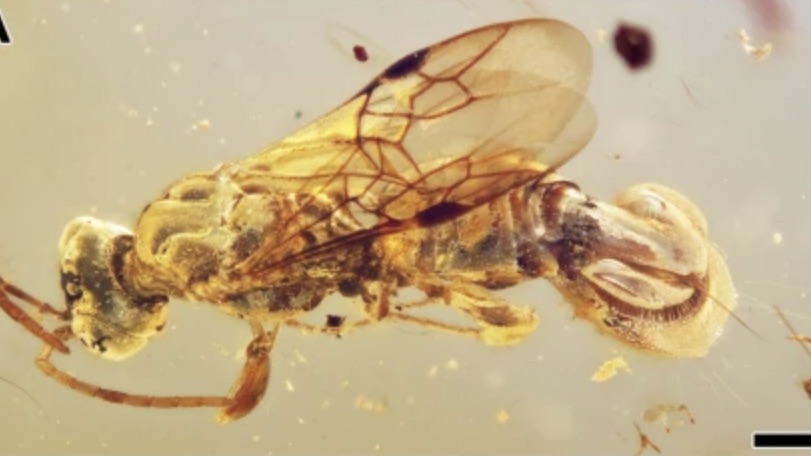Let's create continuous conversations about climate change education: Spreading the Sediment of Science!
Share your ideas and earn a $20 gift card! 💬 Learn More
Captured in Amber, Prehistoric 'Venus Flytrap' Wasp Stuns Scientists
April 10, 2025

Modern wasps are scary enough armed with their stingers. But imagine how prehistoric insects must have felt upon seeing wasps not with a stinger, but an entire Venus flytrap on its body!
The strange mixture isn’t a true mashup of animal and plant. The newly-discovered species only looks like a wasp with a Venus flytrap attached. The specimen was preserved with near perfection in petrified tree sap known as amber.
“(It’s a) Cretaceous weirdo,” paleontologist Phil Barden told CNN.
A team of scientists from China and Denmark found over a dozen of the wasps trapped in 99 million-year-old amber in northern Myanmar. At first, the team did not understand what it was seeing. It mistook the creatures’ strange bodies for cracks in the stone. But a look at other specimens confirmed that the jawlike body was a feature of the species, not a fluke.
“Sometimes the lower flap, as we call it, is open, and sometimes it’s closed,” Lars Vilhelmsen told CNN. He was a co-author of the wasp study published in the journal BMC Biology. “It was clearly a movable structure and something that was used to grasp something.”
Venus flytraps digest what they catch. But the research team believes the ancient wasp had a different use for its feature. The team thinks the wasp used the trap to hold insects steady while eggs were laid in their bodies. Then they’d be let go to serve as a meal for the wasp’s young.
“This is something unique,” Vilhelmsen said. “It’s a 10 out of 10.”
Reflect: If you could discover a new creature that combines parts of different animals or plants, what would it look like and how would it survive?
Photo of prehistoric ‘Venus Flytrap’ wasp from Wu, Qiong et al., BMC Biology, 2025.





